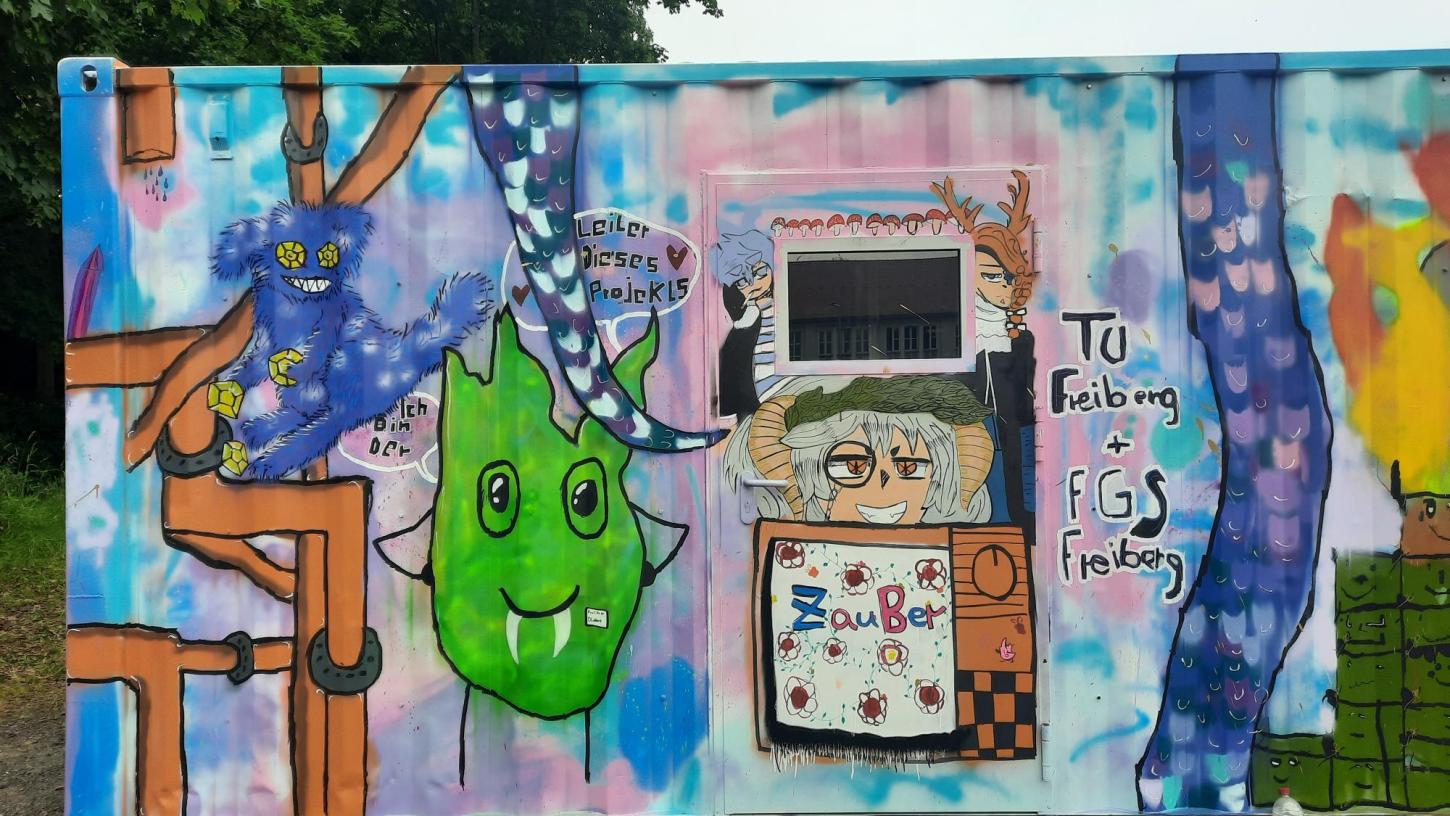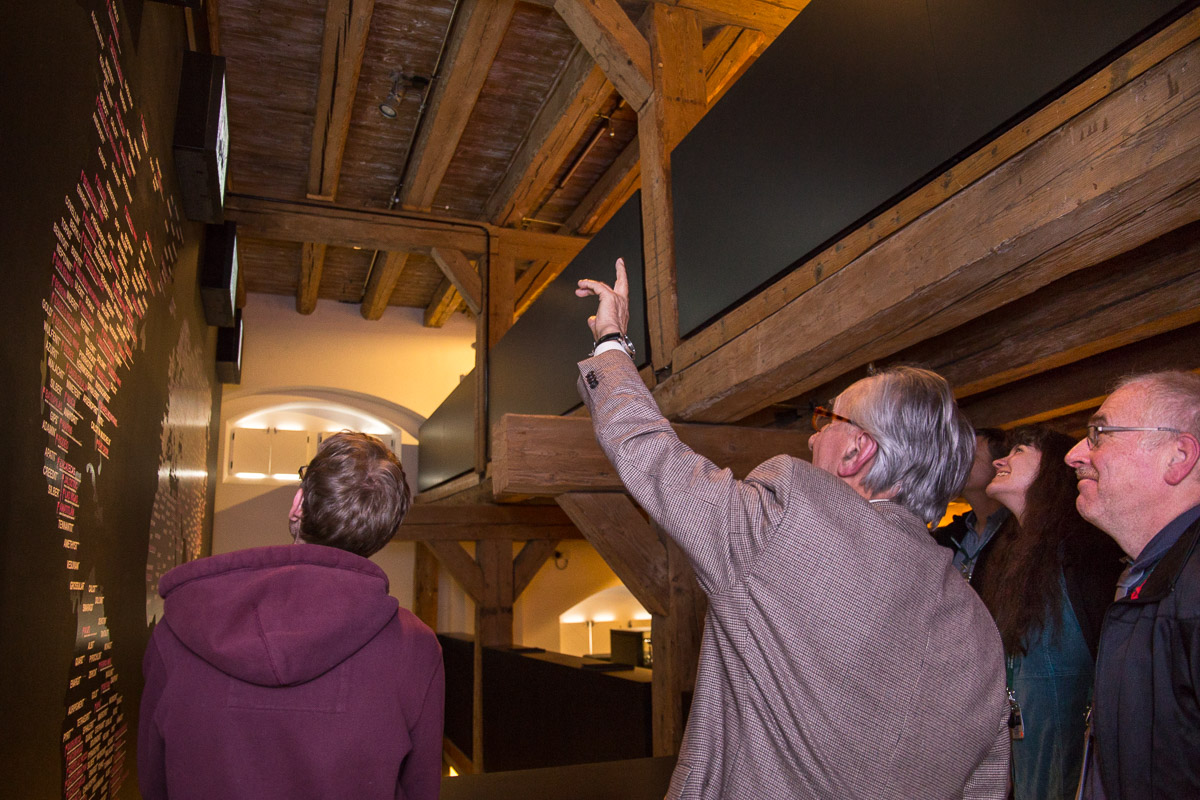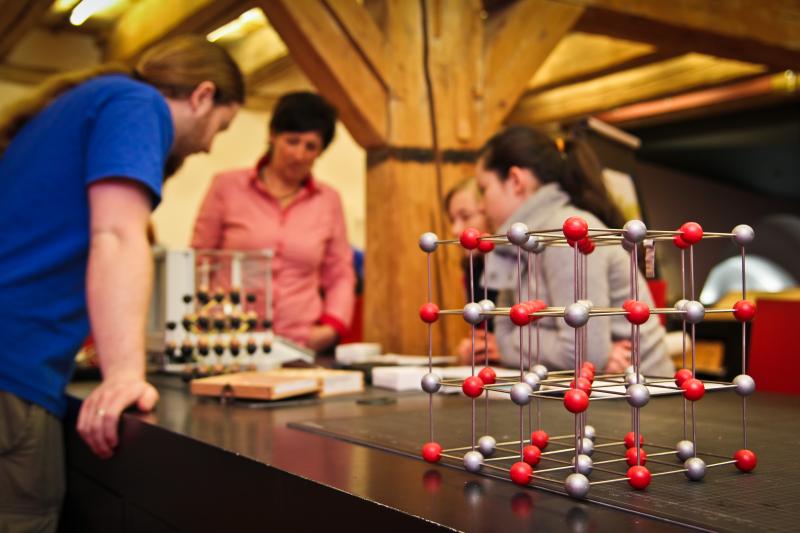26.07.2023
Students turn Science into Street Art
For new ideas or even innovations to emerge, different people and institutions have to work together: The best example of this is the rECOmine project ZauBer, in which partners from science and industry are working together to extract "materials of the future from mining slurries". The administration, e.g. the Upper Mining Authority, is involved in setting up test facilities in a real environment near the Mulde River near Freiberg. Now the project has also found its way into the community: Pupils from the "Maria Montessori" school in Freiberg have artistically designed the test containers intended for processing the sludge. The aim was not only to beautify the containers, but also to depict the background and the concerns of the ZauBer project in a generally understandable way. This sub-project was supported by the new innovation association 4transfer, which is committed to the intensive networking of science, business, administration and society in order to strengthen the culture of innovation in Saxony and the region. Representing the participating students from the FGS "Maria Montessori" in Freiberg, Georg Mitzscherling described the project and their work on the containers thus:
ZauBer: Cleaning the Red Ditch
In the ZauBer (WIR! - rECOmine) project of the TU Bergakademie Freiberg, technologies are to be developed and tested to clean the Red Ditch in the future. In it are 17,000 to 18,000 tons of unused mine sludge, which is filled with toxic heavy metals such as arsenic, cadmium and lead and endangers nature and animals in the surrounding area. There are also valuable materials such as aluminum, iron and zinc in the sludge. The goal is to recycle these. The toxins contained are removed by the filter systems of the ZauBer project. So that this "waste" does not have to be disposed of at great expense, the project leaders thought about how to reuse it and came up with the following idea: Befesa Zinc Freiberg GmbH has slag left over at the end of its zinc processing. The sludge residue is mixed with the slag from Befesa Zinc Freiberg. This mixture is then used to produce "bricks", which are similar to building bricks. Since the bricks are not suitable for building houses because of the heavy metals they contain, they are to be installed underground in the old Freiberg tunnels to prevent them from collapsing. This will save the city of Freiberg several thousand euros, because it would otherwise have to pump concrete into the Freiberg tunnels. The problem with heavy metals in rivers exists in many old mining regions. Freiberg is one of the first places where this recycling is carried out. If the project in Freiberg is successful, the plan is that it will also be carried out in other old mining regions. The processing of the sludge from the red trench takes place in containers, which will now also be used to draw the attention of the local population to the project.
Through Street Art to Enlightenment
To make this project accessible to the public, the TU Bergakademie Freiberg cooperated with the FGS "Maria Montessori" Freiberg. The task of the student groups Street Art and Smart Mediation, consisting of 16 students, was to spray two overseas containers. The students had 5 days to do this. The scientists explained to the students of grades 7 and 8 how the whole thing works technically and how important the project is for environmental protection. The Street Art group painted the containers with mythical creatures that fit the theme, such as a mud monster and several crystal creatures. The task of the Smart Mediation group was to document the work of the Street Art group and publish the results. For more information on the content of the project, you can view the website: Project Detail (recomine.de). Documentation of the container design and explanations of the motifs can be found on Instagram (@4transfer.innovation) and on LinkedIn (4transfer - Innovation Network). The colorfully designed containers are currently still on the parking lot P2 of the TU Bergakademie Freiberg on Gustav-Zeuner-Straße and will be used in perspective at the Rote Graben.
rECOmine is an initiative of Helmholtz Institute Freiberg for Resource Technologies and TU Bergakademie Freiberg.
The following are involved in the ZauBer project (funded by BMBF, FKZ 03WIR1908A)
TU Bergakademie Freiberg and terra mineralia,
INTEC Gesellschaft für Injektionstechnik mbH & Co. KG,
SAXONIA Standortentwicklungs - und - Verwaltungsgesellschaft mbH,
G.E.O.S. Ingenieurgesellschaft mbH and
Befesa Zinc Freiberg GmbH.
The project is supported by the Innovation Network 4transfer.



